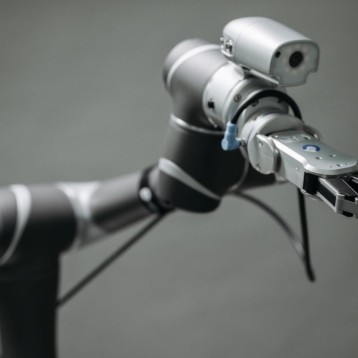The Waalbot is constructed out of two sets of three-footed wheels that use rotary actuators for a single degree of freedom motion, and include passive joints and elastic flexures. Instead of using vacuum suction or magnetic attraction like other robots, Waalbot uses dry adhesion in order to stick to walls and ceilings. A PIC microcontroller is used to control the motion of the robot and it has onboard power. In addition, a spring-loaded tail ensures the robot will always push against the surface.
Waalbot is capable of overcoming small obstacles thanks to its legged motion. Several prototypes of the robot were constructed in order to prove it can actually climb vertical surfaces. The third prototype created was powered by lithium-ion batteries and controlled by a PIC microcontroller, demonstrating impressive steering capabilities. A video of the Tri-legged Waalbot is available here.
Metin Sitti, Assistant Professor of Mechanical Engineering, explained that the inspiration for agile miniature robots was taken from the field of Biology: “We have gone beyond the biological principles using our synthetic materials and abstract motion mechanisms.”
The Tri-legged Waalbot is one of four wall climbing robots being studied by researchers from the Carnegie Mellon University. The others are a Tank Waalbot that is supposed to investigate challenges associated with climbing , a Compliant Waalbot that uses a compliant spine in order to closely mimic Gecko movements, and a Geckobot – a motor actuated robot inspired by the gecko lizard that is very powerful and can be used on a large scale.
TFOT recently covered another innovation in robotic technology, a robot called Eurobot that is designed to take over some of the tasks currently carried out by astronauts, such as spacewalks. Thw Eurobot is planned to join human expeditions to the Moon and to Mars. In 2006, TFOT also covered a gecko-like climbing device which allows one person to climb a wall using vacuum power.
Further information on the Waalbot is available at the CMU’s website.










